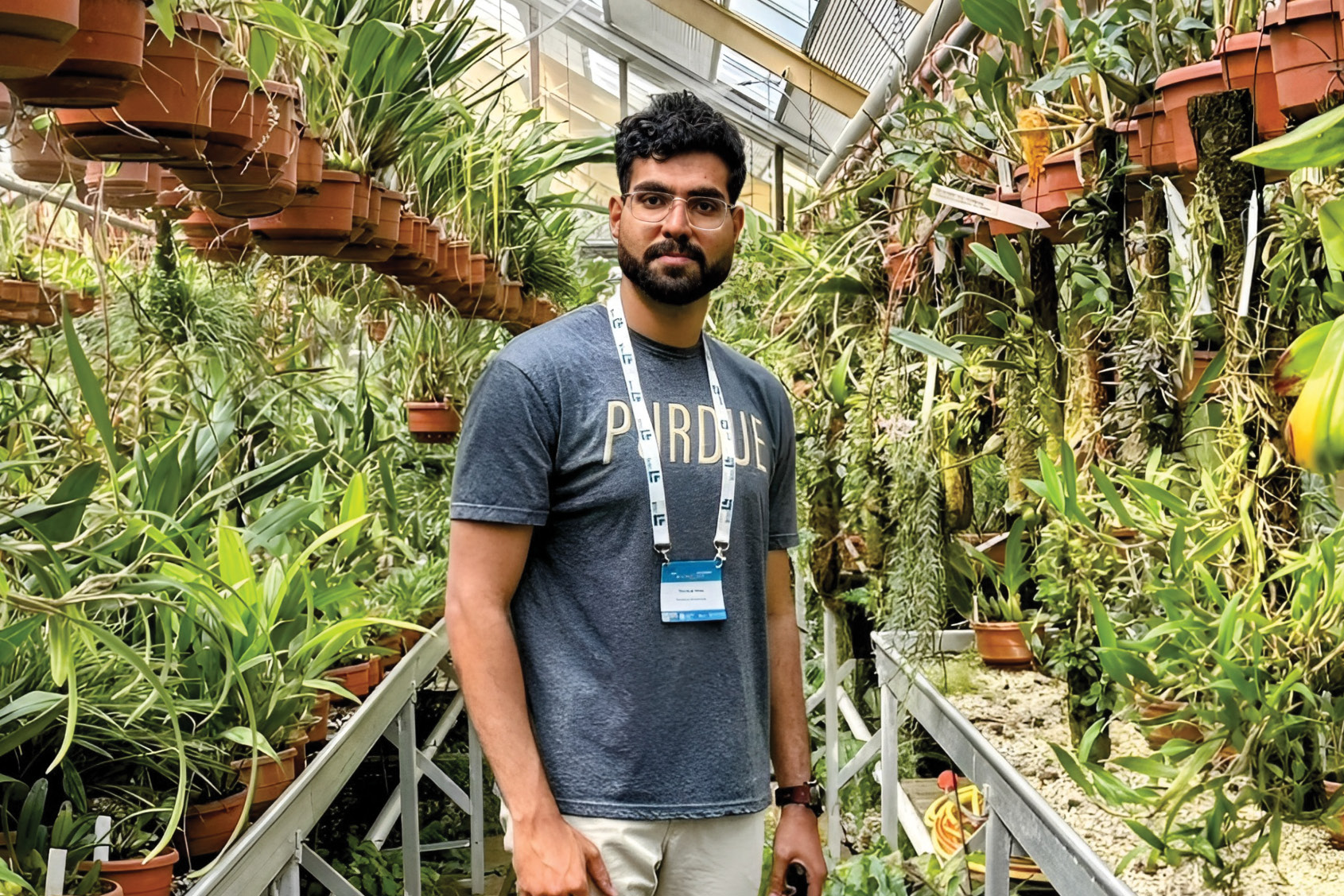EEE Ph.D. student Venkat Roy’s life cycle assessments on new lithium extraction tech move us toward a circular economy
Venkat Roy and EEE/ME Professor Fu Zhao were recently cited in an article from Oak Ridge National Lab on a new method of lithium extraction. A team of chemist invented a way to extract lithium from more sources with better results. These researchers asked Venkat and Dr. Zhao to complete various analyses including a Life Cycle Assessment (LCA) on the material and processes involved. They found that the innovative technology uses one-third the material and one-third the energy compared to standard processes.
Venkat shares more about his work with national Labs, LCA, and lithium extraction below:

Venkay Roy poses in Botanical Gardens in Leiden, Netherlands, where he attended the ISIE 2023 conference.
1. What led to your work in lithium extraction?
“Lithium is a critical element that powers everything from mobile devices to vehicles. Dr. Paras Paranthaman's group at Oak Ridge Lab developed a novel, more efficient lithium extraction method, potentially unlocking new domestic resources such as mining waste streams and used batteries. Along with better extraction capacity and wider applicability, they were interested in understanding the environmental & economic performance improvements. We helped them quantify the energy, material, and possible cost savings from this development in comparison to a conventional route. Additionally, we conducted a Life Cycle Assessment to understand the embodied emissions that could be offset by switching to this route.”
2. What part did you and Purdue play in this research?
“The Critical Material Innovation Hub (CMI), led by Ames National Lab, is a DOE initiative designed to secure supply chains for critical materials like rare-earth metals, cobalt, lithium, and others, essential for clean energy technologies. The initiative supports research across the entire supply chain—from raw material extraction to recycling solutions—ensuring these solutions are economically viable and environmentally friendlier than traditional options. The Zhao group at Purdue provides environmental impact assessments for technologies developed at CMI-affiliated national labs.”
3. Why is establishing a circular economy important to you and to the world?
“A circular economy reduces environmental burdens associated with the entire lifecycle of products—from raw material extraction to disposal. This model can significantly decrease environmental impacts if recycling and reusing processes are less resource-intensive than the disposal and extraction of new materials. Which is especially important for critical materials that are either rare or difficult to extract. Methods like Life Cycle Assessment (LCA) help us see the whole picture and avoid the unintended consequences that might not be obvious from looking at just one stage. Personally, I find the LCA framework fascinating; it is a powerful tool that shows how a single product can be connected to hundreds (or thousands) of processes happening all over the world.”
4. What are the next steps in this research?
“Our recent work involves assessing the environmental impacts of extracting lithium from Nevada clays, a promising new resource for the U.S. It includes a discussion on ways to reduce the impact using new process improvements like the one developed at Oak Ridge. We are in the process of publishing this work. My research currently focuses on developing spatial life cycle assessment, a way to visualize and track impacts occurring in different parts of life cycle through geospatial analysis. This can be extended to applications like sustainable sourcing and natural resource management.”
Venkat concludes by sharing that, “It is important to support the transition of new green technologies (like the one at Oak Ridge) from lab to market. At Purdue, alongside faculty advisors in EEE and students from various disciplines, I helped launch a sustainability assessment service called Green Leaps. It will help research labs/companies highlight the environmental and economic benefits of their solutions through quantitative metrics and work on reducing the hidden costs. We are also developing software solutions to enhance these assessments.”
